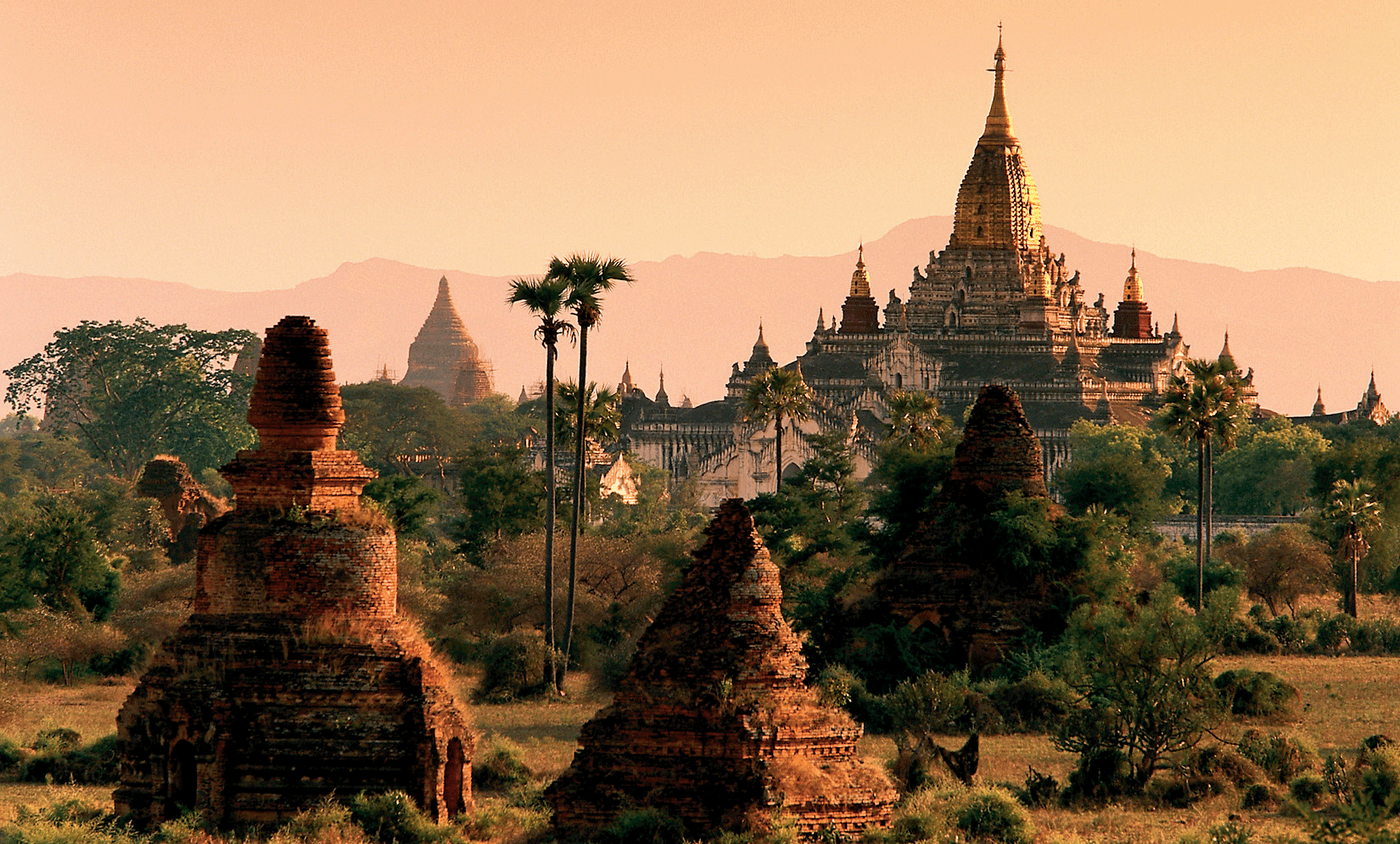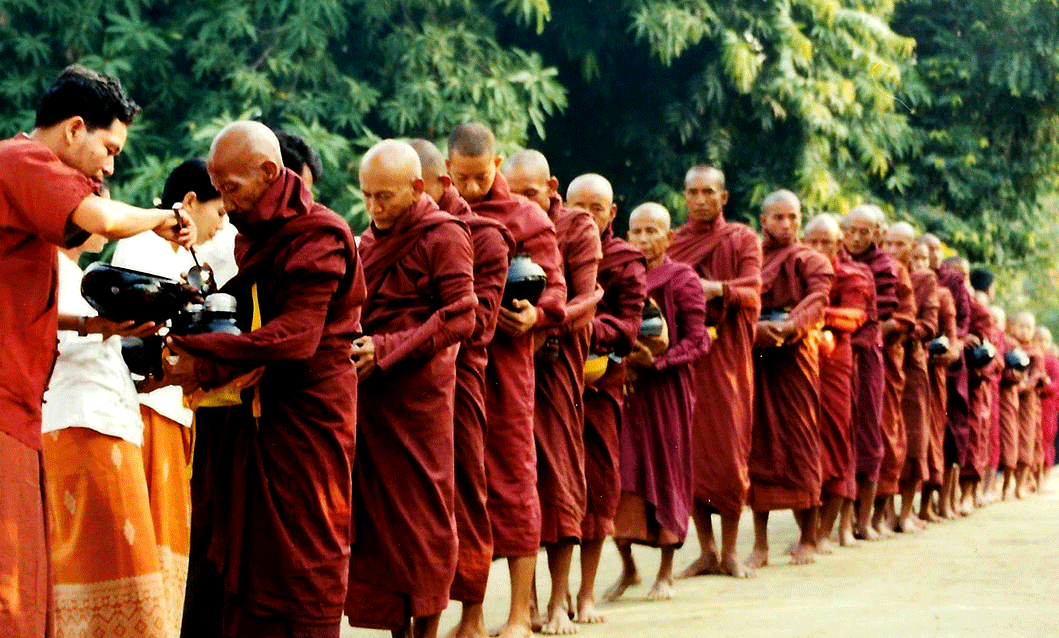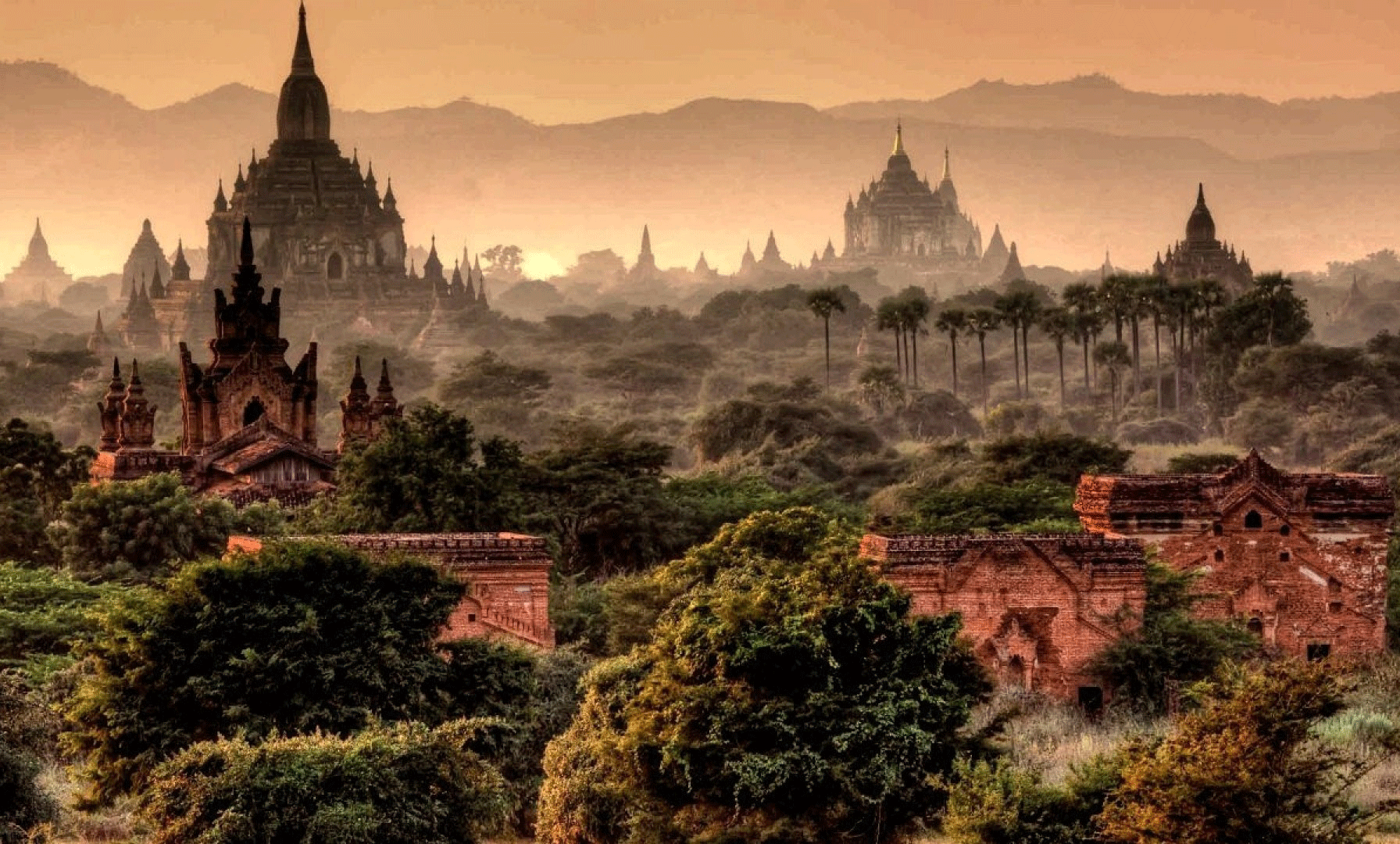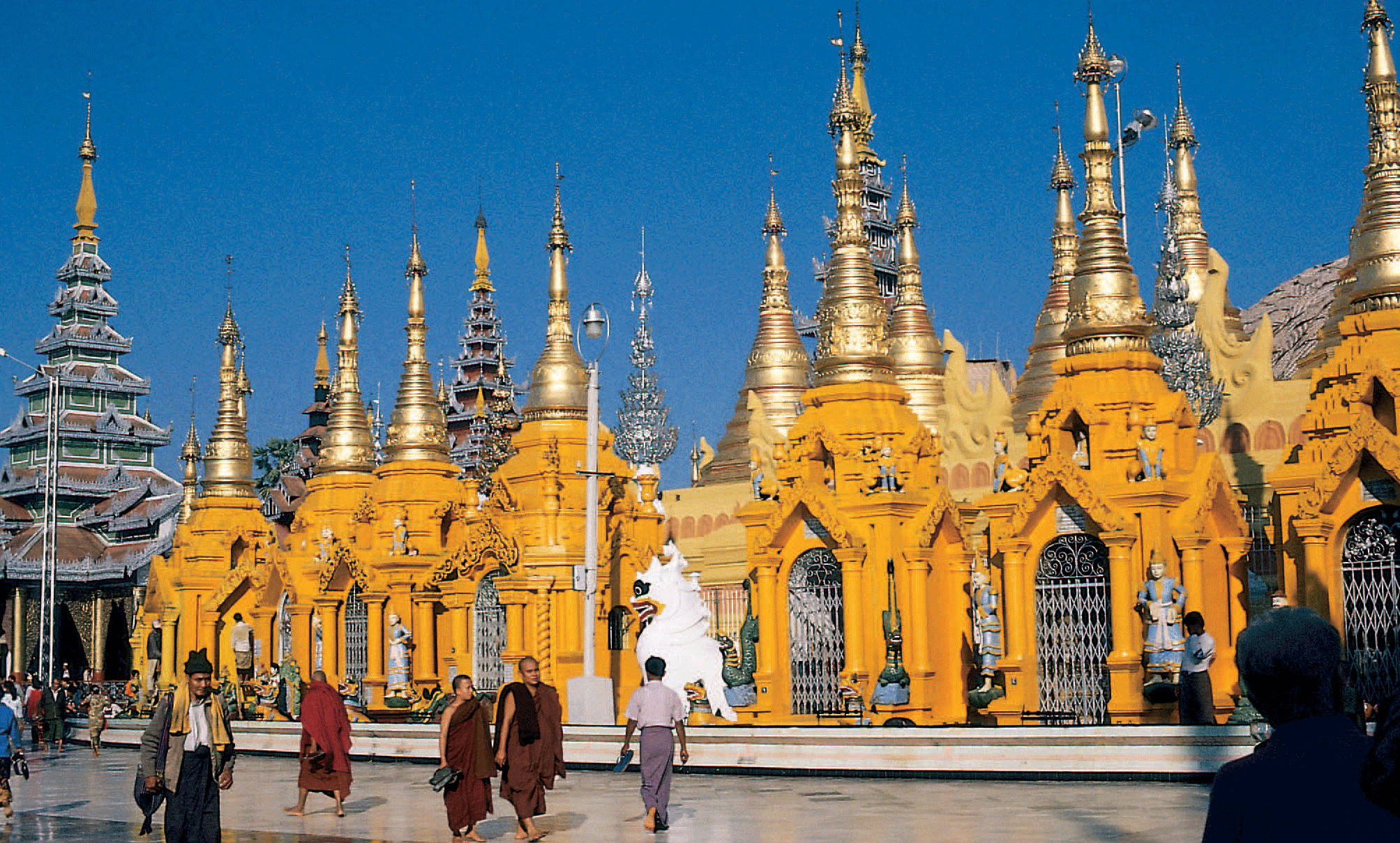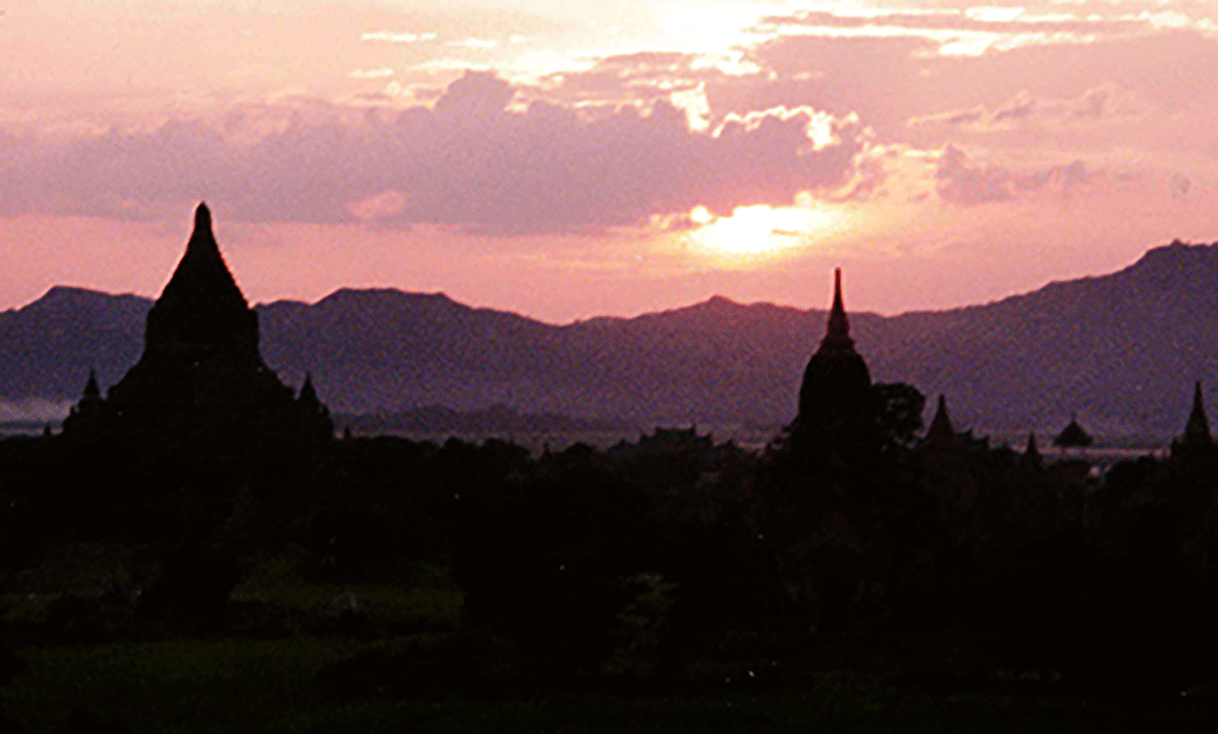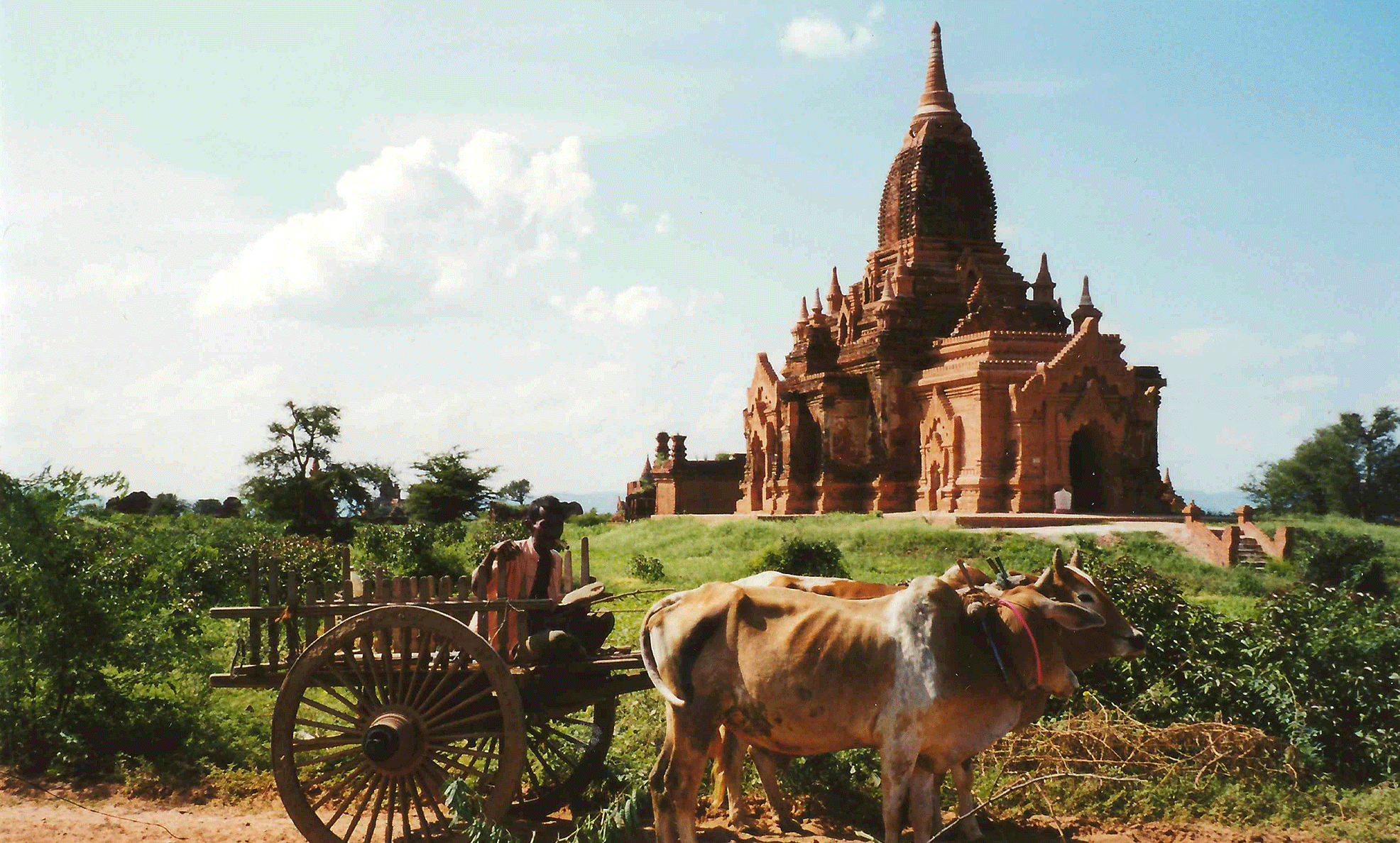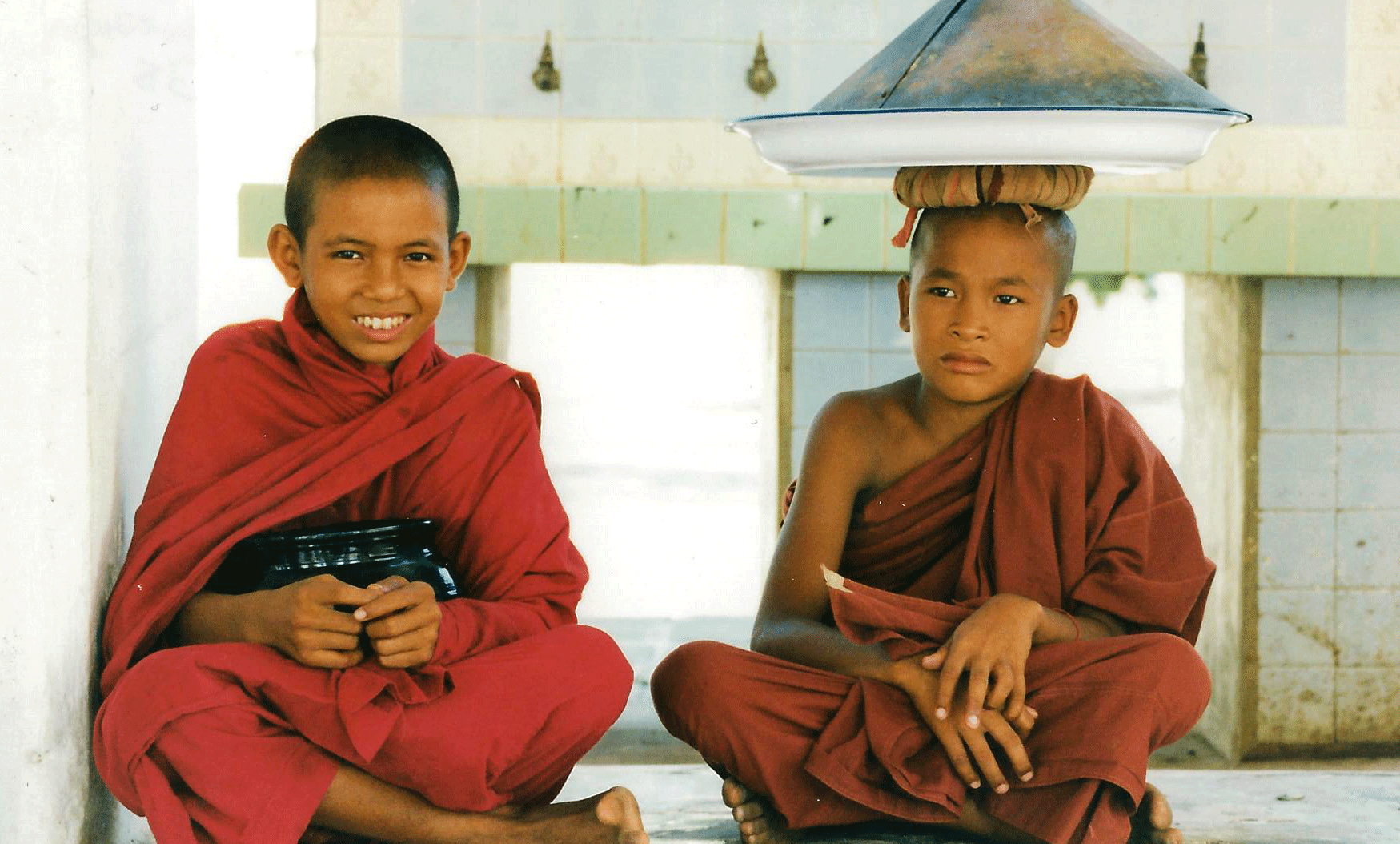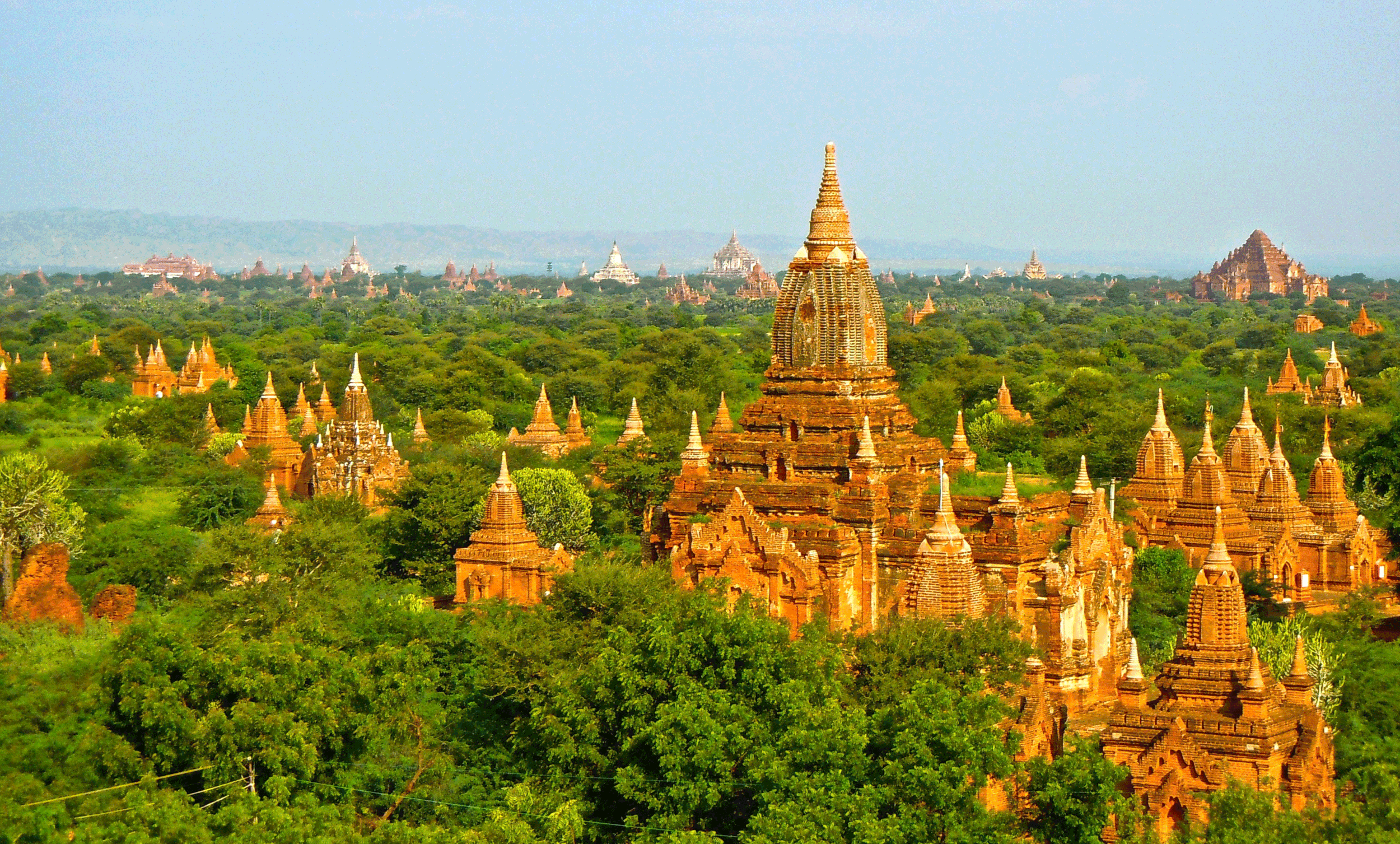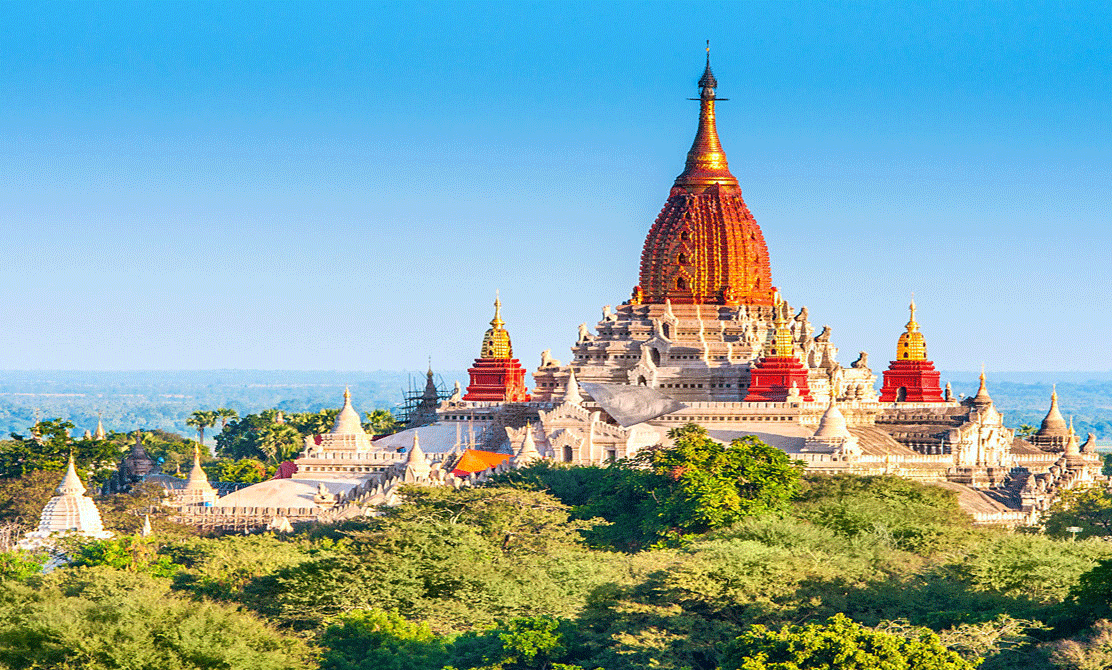Myanmar (Burma)
What We Love
- Historically, this country has been known for its efforts to preserve its unique culture by shutting its doors to the outside world. Only in recent years has the government allowed foreigners to see its hidden, timeless beauty. There are only a handful of countries remaining in the world that have resisted Western influences, allowing travelers to absorb the culture in its native form, and this is one of them.
- The Buddhists’ endless, peaceful search for nirvana is a welcome reprieve from modern Western life. Once you adjust, it is easy to float along at their serene daily pace.
- The magnificent Shwedagon Pagoda in the capital city of Yangon (previously Rangoon) is an awe-inspiring 326-foot golden dome encrusted with 5,448 sparkling diamonds and over 2,317 rubies, sapphires, and topaz stones.
Things To See & Do
- Balloon over the 5,000 shrines and temples that rise from the other-worldly Plains of Bagan.
- Rise with the sun and partake in a ritual that involves putting food in the bowls of waiting monks.
- For those who need a reprieve from archaeological sites and temples, the Inle Lake area in the hill country is a beautiful natural environment. The ethnic minorities of this area anchor patches of weed on the water and use them as floating flower and vegetable gardens. Guests can also visit the “Jumping Cat” Monastery, where monks have trained cats to do amazing tricks.
Where to Stay
An ideal way to see a different side of life in Myanmar is to board a Sanctuary Ananda luxury river cruiser. Visitors can make the peaceful river journey along the Ayeyarwady River from the cultural center of Mandalay to Bagan, which is a treasure trove of Buddhist art history. Here, guests have the opportunity to disembark and visit one of the nearby villages to see how the local people live.
Relax on the upper deck while taking in the temple-studded horizon and ever-changing scenes of the surrounding river life.
Combine With
We highly recommend a combination trip to Thailand. It is a nice contrast to see two countries similar in that both are predominantly Buddhist, yet on different sides of the spectrum in terms of modern development.

